Estimated reading time: 11 minutes.
November/2016 - The Sigma 150-600mm f/5-6.3 DG HSM is the longest lens ever tested on blog do zack. Exactly 200mm longer than the Canon EF 100-400mm f/4.5-5.6 L IS USM, this zoom goes considerably farther to shoot sports, landscapes and wildlife, made for those situations when we can’t get close to our subjects. A focal length considered “hyper-telephoto”, the 600mm used to be only on the photographers dreams, since first parties only offer it on expensive large aperture primes (a US$11,499.00 toy on Canon’s EF 600mm f/4 L IS II USM). But now two third parties offer it on variable aperture zooms, with a measly f/6.3 aperture and a much lower price, accessible to most. It’s such a good idea that Sigma actually offers two 150-600mm: one “Sports”, made for auto focus performance and build quality; and another “Contemporary”, reviewed here, lighter for everyday practicality. Is it the ultimate lens to shoot from afar? Let’s find out! Nice reading.
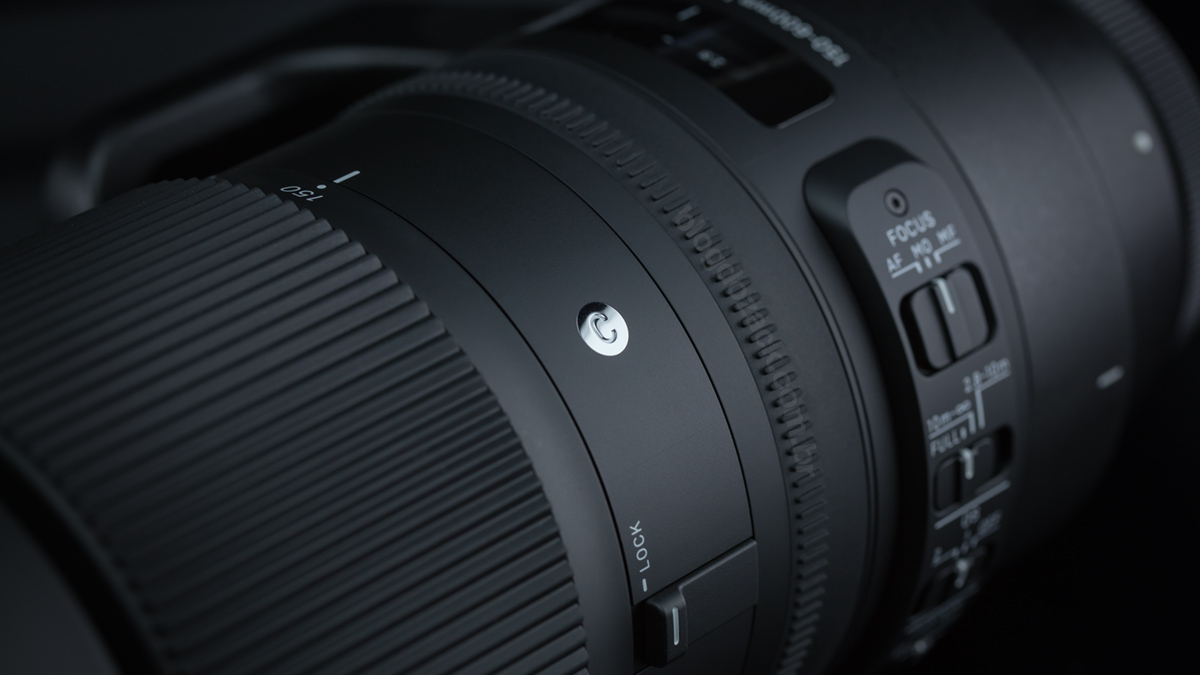
At 10.4 x 25.9 cm of 1.830g, I don’t need to mention the Sigma 150-600mm Contemporary is large, a requirement for the extreme focal length, no matter the f/6.3 aperture (the first element is ø95mm wide). Although very heavy, actually it’s “the lightest 600mm on the market”, ahead of the also zoom Tamron 150-600mm f/5-6.3 Di VC USD G2 (2010g), it’s main rival; both half the weigh of Canon’s L (3920g) and Nikon’s AF-S E (3810g) f/4 primes. That’s because Sigma, as we’re used to on the Global Vision lineup, employs the innovative “Thermally Stable Composite”, a newly developed material as resilient and sturdy as aluminium, but lighter than plastic. So besides being relatively light, this Sigma is also very robust, with no signs of wobbling on its barrels.
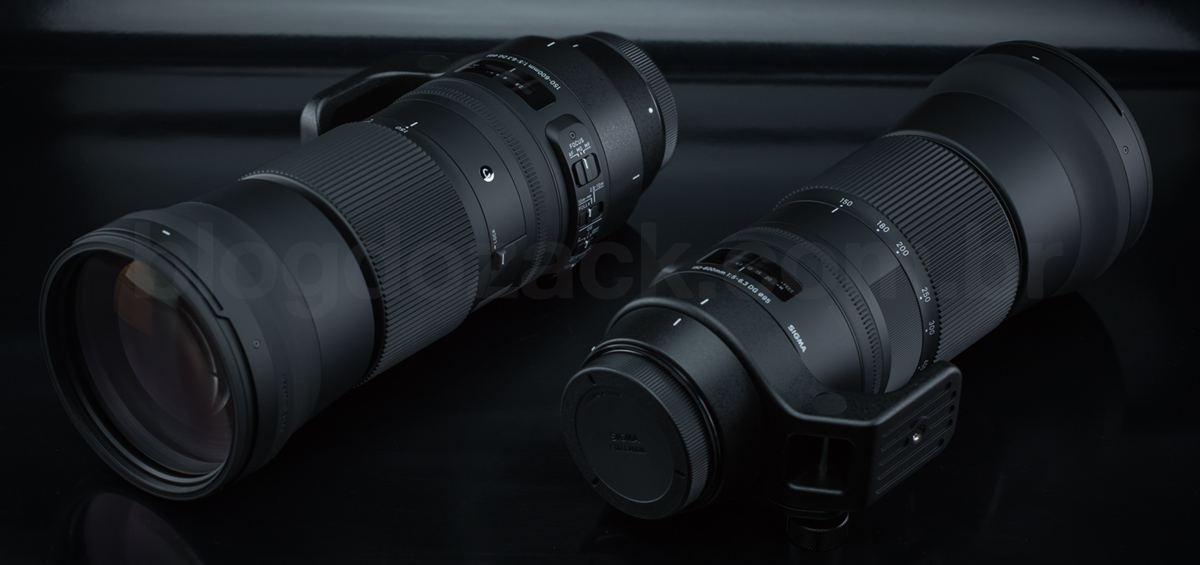
In your hands the modern Global Vision Contemporary design resembles the Sigma Art series, with an all black, rubberized finishing, with white lettering, just missing the metal parts (usually near the mount). Being a variable lens, Sigma gave all its TLC to the zoom ring, with a large 6cm rubber piece in the center barrel; exactly where your fingers rest when you’re supporting the camera + lens combo with both hands. The manual focusing ring and the control switches are at the rear, near the camera, thought as secondary adjustments, less intuitive than those found on smaller lenses; what actually make this giant easier to use. A smaller zoom ring or a frontal focusing ring would unbalance the 150-600mm, with this arrangement perfectly balanced for large cameras, comfortable to use despite the heavy equipment, for longer tripod-less sessions.
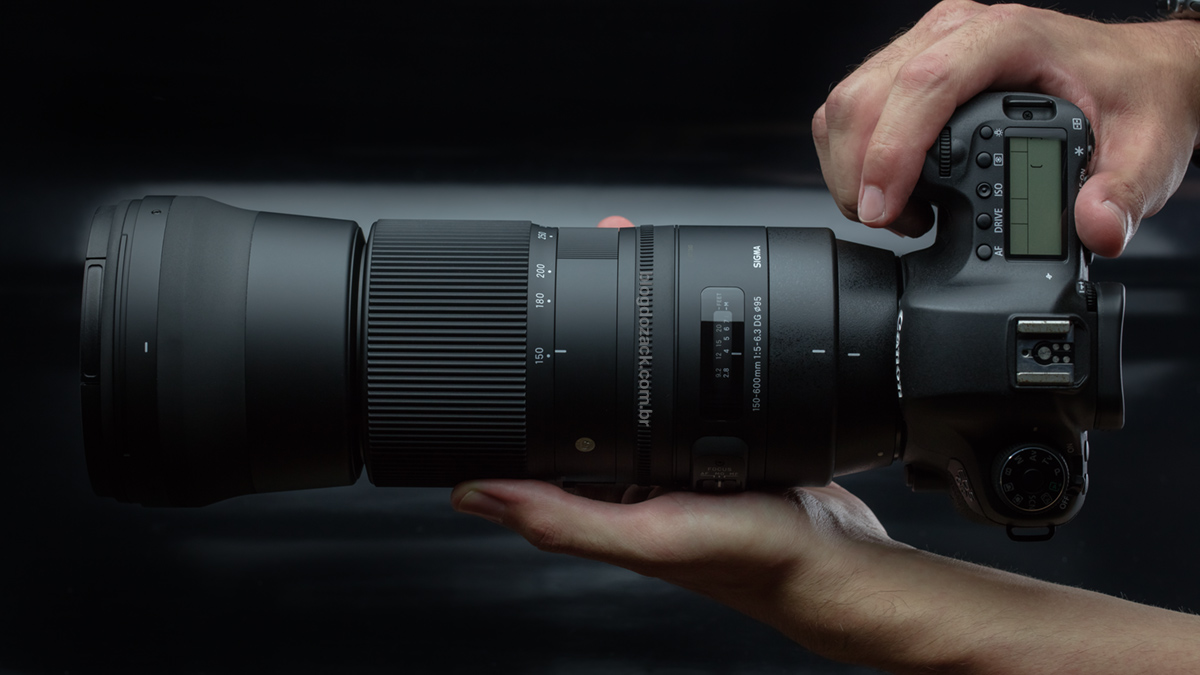
The zoom mechanism is a single cam, and expands the lens from 25.9cm to a lengthy 34.4cm. It can be used in two ways: turning the ring, with a long 160º angle; or by hand, literally pulling the inner barrel from inside, like Canon’s push-pull design from the classic 100-400L. There’s a rubberized area at the front, for better grip, and it’s thought as a faster way to zoom, although it does get tougher from 450-600mm; something I didn’t notice on the ring. So I preferred using it, also because it keeps the camera support closer to the photographer’s body, better than reaching up front; a movement that can unbalance the photog. The zoom ring is also easier to follow subjects, a difficult process looking through the viewfinder from 150mm to 600mm.
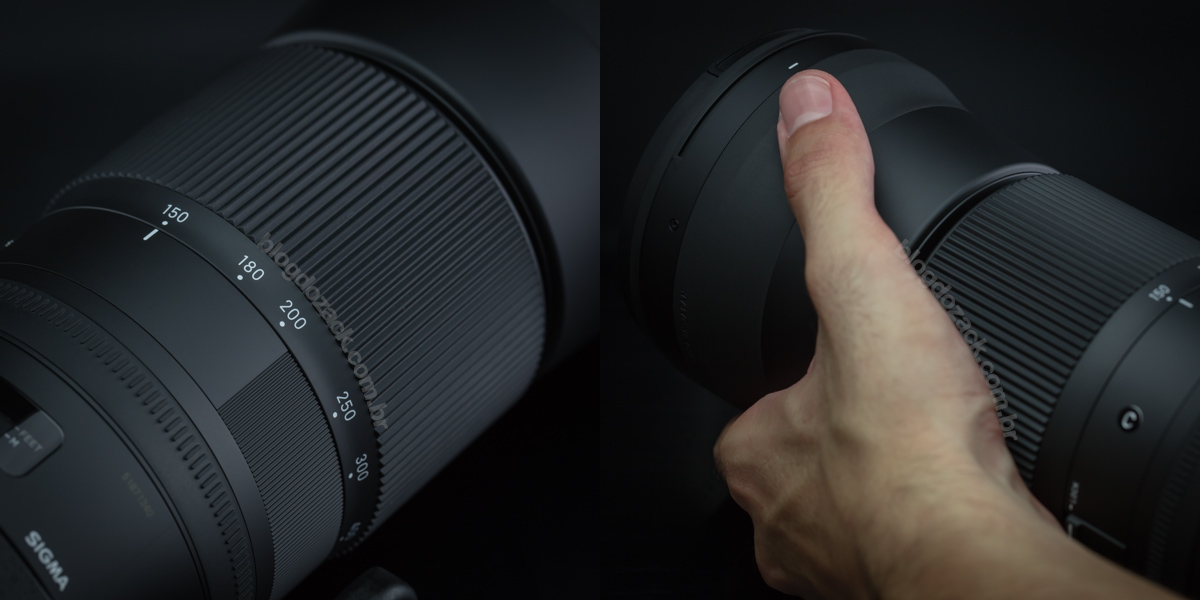
At the rear, the manual focusing ring is apparently thought as a secondary addition, once it’s ergonomics are bizarre. Thin, low and relatively tough, this ring seem more as a “not to be used by accident” feature than an useful one; different from the tall, deep rubberized experienced we have with Art lenses. Besides being thin, it’s actually quite precise, with no play, featuring even a manual override (MO) mode, to compensate for the auto focus motor at any time. Although usable, seriously consider another lens, like the Sports version, in case you’re used to manually focus.

Inside, Sigma employed the latest HSM Hyper-Sonic Motor, faster and more precise than we’re used to on first Global Vision lenses. To shoot landscapes, it’s fast and precise with top of the line cameras, here tested with the Canon EOS 5DS, once the maximum f/5-6.3 aperture is challenge for lesser cameras, not compatible over the f/5.6 aperture (check if your camera works under this condition). To go from minimum focusing distance at 2.8m to infinity it’s 160º, that happens in less than a second on the FULL position, which is quite fast. It can be even faster limiting it from 2.8m-10m, great for portraiture; or from 10m-infinity, for faraway action. However, besides featuring a fast HSM AF, the experience is always different from Canon’s USM, as this Sigma suffers with a very annoying lag when you press the camera button. It’s bad to change from subject to subject when shooting action, as the lens “thinks” from one button press to another. The motor is quick, certainly capable of following moving subjects. But it mysteriously lags to begin focusing, and will depend more on the photographer’s technique to successfully shoot action.

“Ray-ban” with the EOS 5DS at f/5.6 1/1000 ISO500 @ 283mm; perfect AF SERVO with the Sigma Contemporary.
Also, Sigma couldn’t leave its OS optical stabilizer out, mandatory to shoot at telephoto distances. Besides not having its effectiveness declared, it’s a modern, fast, silent and, most importantly, configurable: something that can create a lot of confusion for hyper-telephoto newcomers. The OS actually features three modes: dynamic view, standard and moderate, that replicate the same options offered by Canon’s super-long L telephotos (500mm and up); never used by most photogs. To shoot such distances, it’s usually best to leave the module off during framing, to follow the subject without delays; something Canon calls Mode 3 (exposure only). And it’s with this mode (standard, on Sigma’s) the 150-600mm comes pre-programmed: when it’s time to compose, the viewfinder is not stabilized; just during the exposure, when the camera mirror is raised.
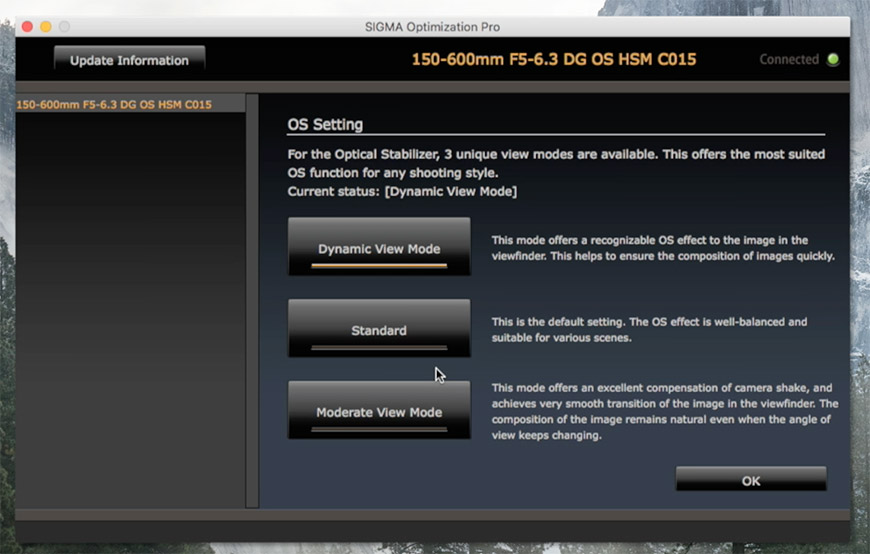
Os modos de estabilização da Sigma 150-600mm f/5-6.3 DG OS HSM Contemporary, só disponíveis a quem tem o USB-DOCK UD-01.
Myself whom had never used such mode before, thought the OS module was broken. It’s very different than standard Canon’s IS (400mm or shorter), that “hold” the viewfinder in place, one thing this Sigma doesn’t do, giving the impression it’s broken. But actually it’s quite effective: I have 1/160 @ 600mm exposures that, although the viewfinder was shaking during framing, the resulting photo was absolutely sharp. The other modes (dynamic and moderate) can be accessed using Sigma’s USB DOCK (not included), that attaches to the lens mount and allows various updates, like focusing speed, micro-focus adjustments and now stabilizer modes. But the lack of information from the manufacturer (and stores) are a big mistake, IMHO. The OS module is very good and a headline from this lens, but I’ve read other sites stating it doesn’t work.

The standard mode is ON, but it’s not very effective during framing; it works mostly when exposing the shot.
Finally at the front the 150-600mm accepts incredibly large ø95mm filters; massively fragile, but allowing for circular polarizers and variable NDs, unthinkable for drop-in telephoto primes. They attach to a plastic thread, that itself sits inside the included-in-the-box lens hood; a plastic piece that adds 8.5cmm, for a full 43cm lens. The large ø95mm frontal glass element is also coated to repel water and grease, easier to clean and very welcomed by those shooting under extremes situations. At the rear the tripod collar is removable, different from the 50-100mm f/1.8 DC, and considerably reduces the lens size, great for packing; Sigma even includes a rubber piece to attach over the collar-less bearings. And the metal mount features a rubber gasket against water and dust, although Sigma clearly states it’s not a weather sealed lens on the instructions manual.

The Sigma 150-600mm f/5-6.3 DG OS HSM is a duplicate specification on the Global Vision lineup, part of the distinct Contemporary family, thoughtfully made for the practical photographer. Although much lighter and smaller than it’s rich cousin “Sports” series, all great features are retained like the solid build, high performance auto focus and the latest optical stabilizer; only the ergonomics differ, given its dimensions. It’s incredibly well made for its price and repeats the TSC magic, that brought us the incredible 50-100mm f/1.8 and. And as we’ll see, it doesn’t lag that much in the image quality department, gathering the attention of everyday photographers.

“Hélice” at f/7.1 1/320 ISO100 @ 267mm; all photos with the Canon EOS 5Ds; some raw files available at Patreon.
With a 20 elements in 14 groups optical formula, one FLD glass (compound Sigma sells as an equivalent to Canon’s exotic fluorite), thee SLD (special low dispersion), the Sigma 150-600mm f/5-6.3 DG HSM Contemporary is an optical surprise, on par with much more expensive lenses. Here tested with the demanding Canon EOS 5DS, a 50MP full frame that “magnifies” optical flaws, this Sigma is incredibly sharp around the center frame, with great resolution, easier to show issues due to the extreme focal length (that demand faster shutter speed, higher ISOs and atmospherical distortion), than optical shortcomings. The edges display a great deal of vignetting, given the very tight fit of elements (600 divided by 6.3 is exactly 95mm, the first element diameter), more than the lack of resolution. It’s a big boy performance, but on an accessible, easy to use package.

“Tunel” at f/6.3 1/320 ISO3200 @ 600mm.
At any focal length, we don’t need to worry when shooting wide open, to get sharp, high resolution files from the 150-600mm. While the center frame do show a greater degree of resolution than the edges, it’s only noticeable on shallow depth of field images, when the subject shouldn’t be around the edges at the first place. To shoot landscapes, usually at f/8 and f/11 for an “all-in-focus” look (and a longer depth of field), this zoom has about the same resolution as most primes, with edge to edge resolution, made for printing. It’s incredible to see urban scenarios perfectly detailed at 600mm and f/8, rendering a fine thread of vertical/horizontal lines, on a geometrical composition. Sigma really outdone itself on these new zooms, and their prices can’t explain the performance.

“Tree” at f/5 1/60 ISO125 @ 150mm; shortest focal length.

100% crop, impeccable wide open resolution at 150mm.

100% crop, incredible resolving power wide open, at 600mm.

100% crop, any doubts this is a high resolution lens?

100% crop, yes, that’s the wide open resolution at 600mm.
Stopping down mostly eliminates vignetting, that is pronounced even on smaller apertures, like f/8-f/11. It’s not really an issue, but a feature: given the tight optical pieces (remember: 600mm f/6.3 is a geometric equation, resulting in a ø95mm aperture), without larger glass pieces to compensate for the structural edges, the frame look a bit darker than usual, actually giving digital images more saturation. Birds, wildlife and portraits gain that “large format” look on full frame cameras, done without digital filters. But it’s practically invisible on flatter compositions, like faraway landscapes. But here’s the thing: you shouldn’t be shooting landscapes at f/6.3 (given the short depth of field) and, if you were, it would be to compensate for the lack of natural light (at dusk, for example); thus, the frame should look dark after all. It looks great, be it for printing or web output.

“Bison II” at f/7.1 1/500 ISO400 @ 531mm.

100% crop, moiré even on fur, and that’s on the OLPFed EOS 5DS; impressive.

100% crop, the resolution is more limited due to atmospherical phenomena than for optical flaws.
Chromatic aberrations are actually difficult to render on telephoto distances and, besides Sigma trying really hard to do it with a 20 elements design, they’re well controlled overall. Mainly visible on high contrast zones, like trees against a bright sky or the metal frame on glass windows, those magenta and green edges are minimal, here magnified by the 50.6MP 5DS. There’s no need to fix it via software, and they would be naturally cropped out on APS-C cameras (equivalent to a whopping 960mm!) and don’t appear in prints. Axial aberrations are also invisible, with no colored halos on front or background highlights. It’s easy to go from the “all in focus” to “bokehlicious” looks, without major software compensation or lack of quality.

100% crop, discreet lateral chromatic aberration on high contrast zone.

100% crop, colored lines on the frame’s edge.

100% crop, the less contrast, the less aberrations.
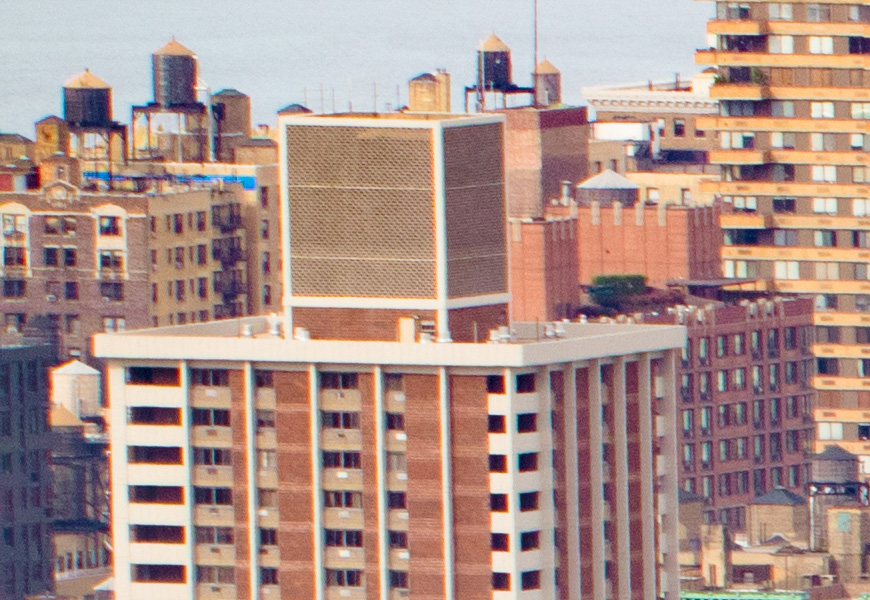
100% crop, blue and orange lines depending on the focal length.
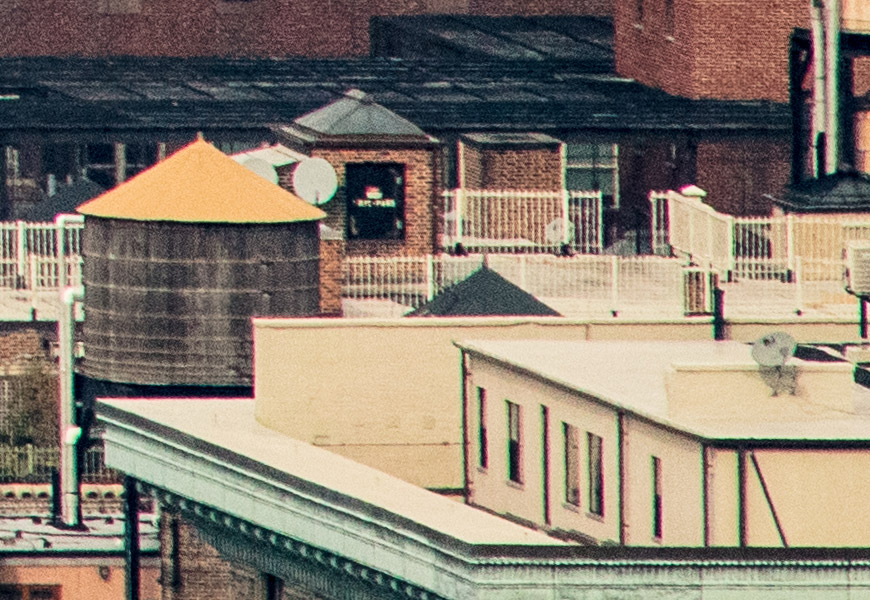
100% crop, easy to fix lateral chromatic aberration.
”Thread II” at f/8 1/1000 ISO1000 @ 600mm; pincushion by the end of telephoto. ”O’Clock” at f/7.1 1/100 ISO100 @ 157mm; and some pincushion at the shortest range. ”Dusk” at f/5.6 1/160 ISO250 @ 150mm. ”Autumn II” at f/8 1/640 ISO1600 @ 600mm.The only optical complaint comes from the very noticeable geometrical distortion, visible on straight lines. Be it in urban sceneries with buildings, signs and straight architectural lines, there’s the pincushion distortion at 150mm AND at 600mm; lines seems to fall to the center of the frame. It’s actually expected for a zoom, and as easy to fix as the chromatic aberrations, with a single click in post. But they’re inevitably there, given the 20 elements, one at ø95mm, and the 4X zoom; only a much more expensive telephoto prime would fix geometric distortions optically.
Finally colors and bokeh are pleasing on telephoto lenses, with Sigma coming as close as possible to Canon. Hues are yellow-biased with warm oranges and reds, resulting in brown-ish greens and neutral blues; all easily manipulated via software. With the 5DS sensor, known for its aggressive tone variation linked to the white balance, it’s easy to get lifelike files from everyday scenes, not asking for major compensations. The out-of-focus quality varies depending on the focal length, background distance and even subject, but it’s usually pleasing, enough to isolate close items. The highlights, that actually give the bokeh its significance, are rendered without stronger edges, although not completely blurry; only a larger aperture lens could render a smoother bokeh.

“Flowers” at f/6.3 1/500 ISO2500 @ 600mm; minimum focusing distance; smooth bokeh.

“Wood pecker” at f/6.3 1/320 ISO500 @ 600mm; distance bokeh (about 10 meters) is not that successful.

“Elk” at f/6.3 1/640 ISO1250 @ 600mm; at 70 meters, the bokeh definitely won’t isolate the subject.
To talk about Sigma lenses nowadays is always a pleasure, thanks to the Global Vision revamp. With a solid built, ease of use (large zoom ring, fast AF) albeit imperfect features (bizarre manual focusing ring, exposure-only OS), the 150-600mm f/5-6.3 DG fits perfectly on the Contemporary lineup, really thought as a practical tool for the everyday photographer, who won’t carry a 4kg prime to do the same images. It’s surprise is in its optical performance, that mimes higher en performance, besides the very low price point; always a mystery when talking about Sigma lenses. The 600mm used to be a luxury to few photographers, but the 150-600mm bring it to mainstream. Be it for faraway subjects or to let your creativity fly, this is the lens. Nice shooting!